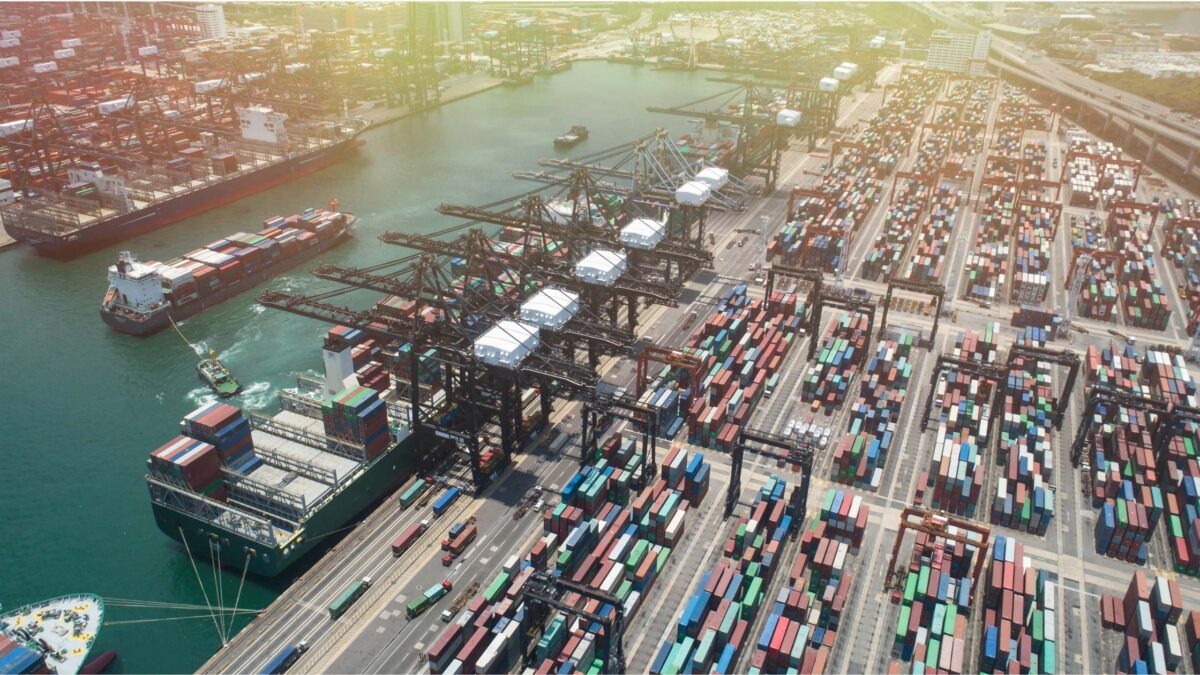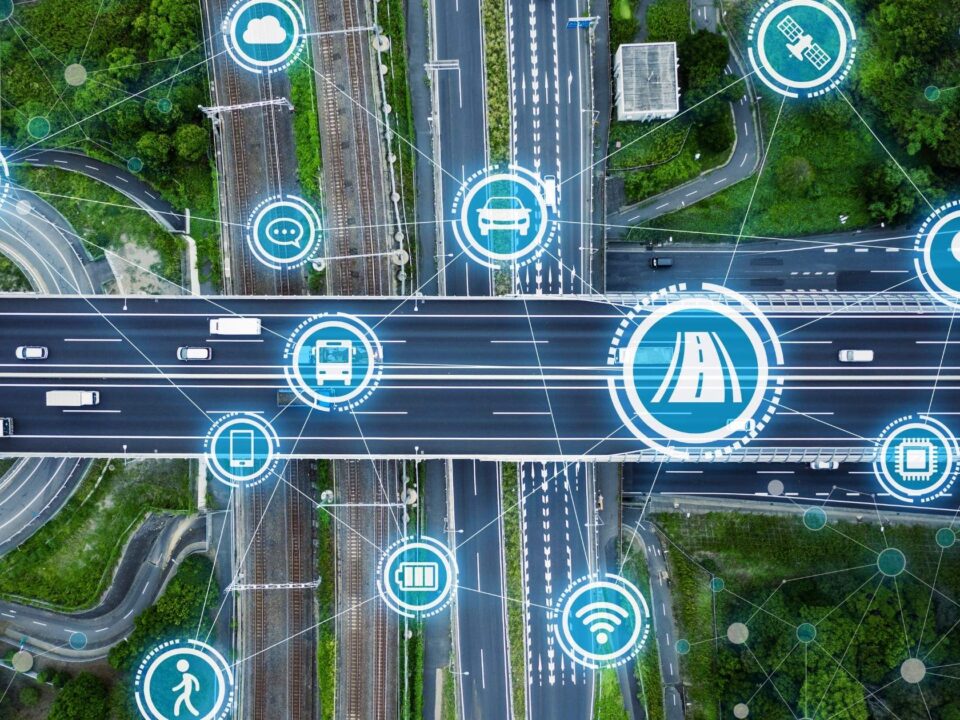SUPPLY CHAIN AND LOGISTICS TRENDS THAT COULD BE BIG IN 2020

What is Logistics and Supply Chain Management?
October 1, 2020
The Importance Of New Technologies In Supply Chain
January 7, 2021Increasing technological advances are generating massive waves across industries, and one of the most affected sectors could be logistics and the supply chain. The logistics industry, known for its heavy use of manual processes and vast volumes of data processed in various ways and in various locations, may have the most to benefit from introducing new technologies and following the most disruptive supply chain and logistics trends.
The logistics industry has begun to implement Artificial Intelligence strategies in its processes over the past few years, particularly intelligent transport, route planning, and demand planning, but that was just the beginning. AI is now making a big difference in logistics, from last-mile distribution robotics and sustainability strategies to warehouse automatic picking systems and predictive optimization tools. Shippers, carriers, manufacturers, and customers should all expect to continue to benefit from these developments in logistics technology in 2020.
Augmented Intelligence is also anticipated to rise in use alongside AI. Augmented intelligence blends human intelligence with procedures automated by AI. For example, the use of Augmented Intelligence in logistics management can also be superior to the use of AI alone, as it can combine inputs from human planners (experience, transparency, customer service, versatility, common sense, etc.) with Artificial intelligence that is left to do the repetitive and monotonous work.
Digital twins are potentially one of the most exciting developments to keep a watch on in 2020 in logistics technology. Products aren’t ever, as many logistics experts know, quite the same as their computer simulations. In its current state, modeling does not take into consideration how parts wear out and are changed, how fatigue builds up in systems, or how owners make adjustments to meet their changing needs. Digital twin technology, though, is changing this once and for all: now it is possible to combine physical and digital worlds into one, enabling us to interact with the digital model of a physical entity or component for the first time just as we might with their physical counterparts.
Supply Chain visibility in real-time
Supply Chain Visibility (SCV) for logistics service providers is no longer just a wonderful thing to have; it was a requirement in 2019, and it needs to take a further step further in 2020, becoming real-time. Customers and carriers are now demanding for this real-time data more than before, which means logistics and supply chain organizations need to concentrate on integrating cutting-edge SCV technologies in their operations. Visibility startups in the new circular supply chain are delivering technology that enables fast reaction to change by enabling businesses to use data in real-time. Such data involves trends of traffic, weather, or roadway and port situations that are used to take action and transform demand or redirect supply and optimize routes. It is now estimated that a logistics company that uses fully integrated supply chains is 20 percent more effective than those without integration.
Blockchain
Blockchain is an open record of transactions circulated between computers within a given network. Since everyone has references to the same ledger of transactions on the public blockchain, there is full transparency, which makes it difficult for users to hack or cheat the system and therefore removes the need for third-party participation. This could make it a lot easier for various carriers or shippers in the logistics industry to exchange sensitive information, and businesses could generate financial intermediation and supply chain services.
Advanced Analytics
When it comes to addressing the problem of data inconsistency, logistics sectors still have work to do, which leads many young startups to concentrate on developing predictive and specialized analytics platforms as a response. These start-ups in logistics help larger businesses clean and digitize their data, enabling them to use the data for advanced analytics and predictive optimization. This includes improved visibility of the supply chain, demand forecasting, constructive linehaul scheduling, predictive maintenance, prediction of unpredictable circumstances, and improvements in last-mile delivery. All businesses will be able to profit significantly as data is standardized and digitized across the logistics industry.
Newcomers in the industry
But it’s not just digital technologies shaping the future of logistics: digital business concepts and new competitors in the industry are also emerging. New technologies integrating elements of the sharing economy, often powered by startups, are rapidly gaining popularity. Startups prefer to concentrate on the “asset-light” parts of the value chain without the need for a rich asset history, for example by being digital freight forwarders.
Investment in logistics startups
Venture Capital funds have invested heavily in innovative logistics start-ups in 2019, so it has become one of this year’s more important logistics technological advancements. As we see rising VC funding for logistics start-ups, this route is beginning to be taken by major logistics companies. All of them have invested millions of dollars in emerging technology created or even purchased entirely by creative startups. This means logistics companies will get the best of both worlds when driving R&D through their new partners, leveraging their capabilities.
Sustainable technology
Sustainability is a theme that has been cutting through sectors, and no exception is logistics. In particular, last-mile distribution is historically very time-consuming and energy-consuming, which is also why it provides many opportunities for new and intelligent approaches. Companies use a plethora of technologies, from real electric vehicles to AI-based software that calculates the route with the lowest emissions produced, to reduce the adverse environmental effects.
Vehicles that are autonomous
While autonomous vehicles, whether trucks or drones have become generally linked with the near future of logistics, during this year we are still expected to see it in its trial phase alone. Nonetheless, it is one of the most debated developments in logistics technology lately.
Robotics in warehouses
Warehouse activities have certainly experienced a major change in recent years, and with technology being increasingly incorporated, this is one of the developments in logistics technology which is likely to persist. Warehouse robotics, a fast-growing field, is one of the apparent developments. Robotisation will greatly increase the performance and speed of warehouse operations, whether they are wearable technology, driverless cars, or multifunctional robots.
Conclusion
Recent years also saw massive development in fields such as artificial and augmented intelligence, sophisticated analytics, and automation for the logistics industry, to name only a few. These developments have progressed faster than ever, although start-ups continue to pop up at a rapid pace with even newer solutions and inventions. But new demands and requirements are attached to these technologies, requiring logistics firms to either adapt or fall behind. A lot of pressure comes from consumers in the form of individuals and companies, both of whom insist that goods or services be quicker and more affordable than ever before. The future of logistics looks brighter and more interesting than ever before.




